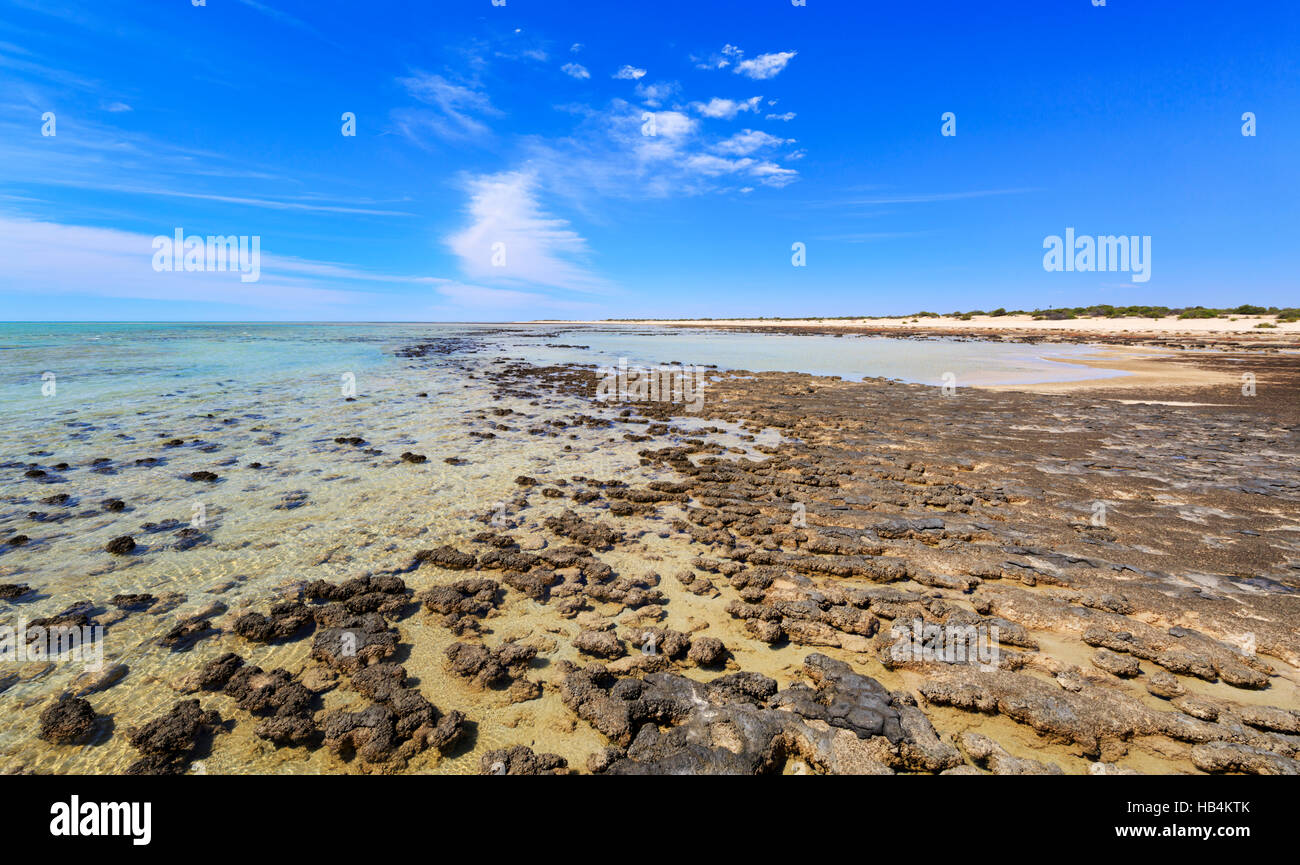Hamelin Pool Marine Nature Reserve: A Journey to Ancient Stromatolites
Welcome to the fascinating world of Hamelin Pool Marine Nature Reserve, a unique ecosystem nestled on the rugged coastline of Shark Bay, Western Australia. This captivating sanctuary is not just a beautiful destination; it is a storied time capsule, preserving one of Earth’s oldest living organisms: stromatolites. These peculiar structures are not just geological formations, but rather enigmatic reminders of our planet’s primordial past.
As you embark on your journey to Hamelin Pool, brace yourself for an adventure that will transport you back nearly 3.5 billion years in time. This is a place where ancient life thrives, continuing its existence in the modern era, and where each wave lapping at the shore whispers the secrets of the Earth’s early days.
The allure of stromatolites lies in their ancient lineage. These cyanobacterial formations emerged during a time when Earth’s atmosphere was devoid of oxygen, radically transforming the world as we know it. Their photosynthetic processes contributed to the buildup of oxygen in the atmosphere, making it possible for life as we recognize it today to flourish. As you gaze upon these layered structures, towering above the sandy seafloor, you are witnessing one of the planet’s original architects. Each stromatolite is a testament to the resilience and endurance of life in an inhospitable environment.
Now, let’s delve deeper into the story of Hamelin Pool Marine Nature Reserve, focusing on its striking geography, the flora and fauna that inhabit it, and the invaluable lessons it teaches us about our planet’s past, present, and future.
One of the most striking characteristics of Hamelin Pool is its saline waters, which have a salinity level significantly higher than that of the open ocean. This unique environment allows for the growth of stromatolites, particularly the species known as *Microcoleus chthonoplastes*. The high salinity is a result of a natural phenomenon; as water evaporates under the intense sun, it leaves behind a saline concentration that becomes a haven for these ancient organisms. The surrounding ecosystem is equally fascinating, featuring salt flats and mangroves, which provide a vibrant habitat for diverse bird species, crustaceans, and fish.
To fully appreciate this geological marvel, one must navigate the gently winding paths leading to the observation points scattered throughout the reserve. Each viewpoint not only offers breathtaking vistas of the rugged shoreline but also provides opportunities to engage with the environment directly. You’ll find interpretive signs detailing the history of stromatolites, conservation efforts, and the significance of this unique habitat. This is truly a hands-on learning experience where young adventurers can connect with nature while understanding its complexities.
But Hamelin Pool is not just a static display of the past; it is a living, breathing sanctuary that invites stewardship and curiosity. Engaging with this delicate ecosystem encourages environmental awareness and inspires younger generations to appreciate and protect these wonders. Projects aimed at conservation and education within the reserve underscore the need for balance in our interaction with nature. Thus, visitors can partake in guided tours or volunteer activities, providing an immersive learning experience that fosters a sense of responsibility toward our planet’s heritage.
The relevance of stromatolites transcends mere nostalgia for ancient times; they serve as vital indicators of ecosystem health and can teach us about the potential impacts of climate change and pollution on marine environments. Young explorers visiting Hamelin Pool are not merely students of history; they are active participants in a conversation about the future of life on Earth, and the lessons learned here can resonate far beyond this remote corner of the world.
In conclusion, Hamelin Pool Marine Nature Reserve is a rare gem that offers a unique glimpse into the distant past while challenging the younger generation to think critically about their environmental impact. As you walk along the shimmering waters, surrounded by these ancient structures, you are privy to the remarkable tale of life’s resilience. Embrace this opportunity to learn, to explore, and to reflect upon the profound connections between all living beings and the Earth itself.
You May Also Like
Best Fish to Catch in Australia: A Guide for Anglers
Australia boasts an extraordinary diversity of fish species, making it …
Emily Bay Norfolk Island: A Hidden Gem in the Pacific
Emily Bay, a picturesque enclave nestled on the sun-kissed shores of …
Holidays on August 23: Global Festivities & Observances
August 23 is a date that carries a bouquet of cultural significance …





